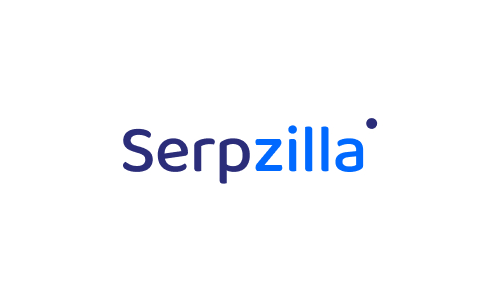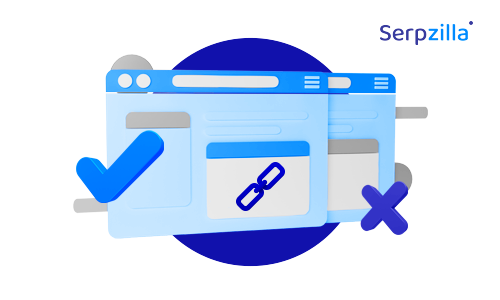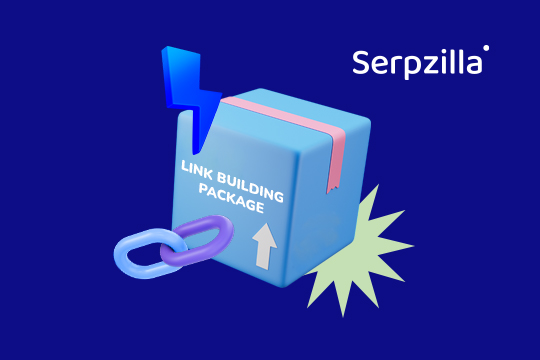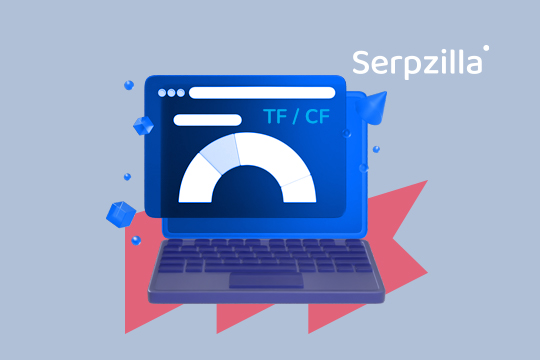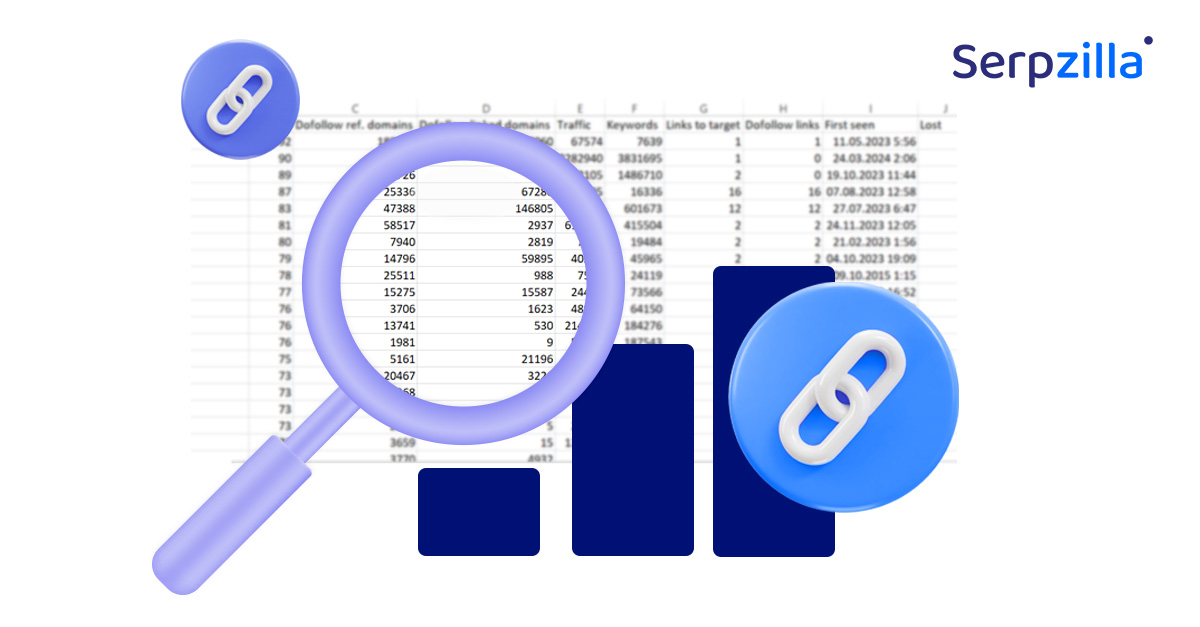Google ranking algorithms have been a subject of ongoing SEO debates for the last 20 years. Google has never explicitly disclosed which factors it uses exactly to rank pages in SERP. Neither has it given out information about whether some of the factors play a more important role than others.
What we SEO experts know about Google’s ranking system and its factors is based on years of trial, errors and observations. The algorithm is multifaceted, flexible and gets updates very frequently, so it’s always a matter of keeping an eye on your SERP performance and a lot of tweaking. However, all those years of observation, experimentation and analysis haven’t been in vain.
In this article, we will speak about key ranking factors that Google tends to prioritize today. Why today? Because historically, the way Google evaluates pages for SERP has changed dramatically. Take a look at these two graphs. The difference between them is less than 4 years. 1 is for the year 2021 and 2 is for the year 2025.
1.
2.
The ranking factors are many, so we will split them into logical groups, where factors within each group are often interconnected.
Content Quality
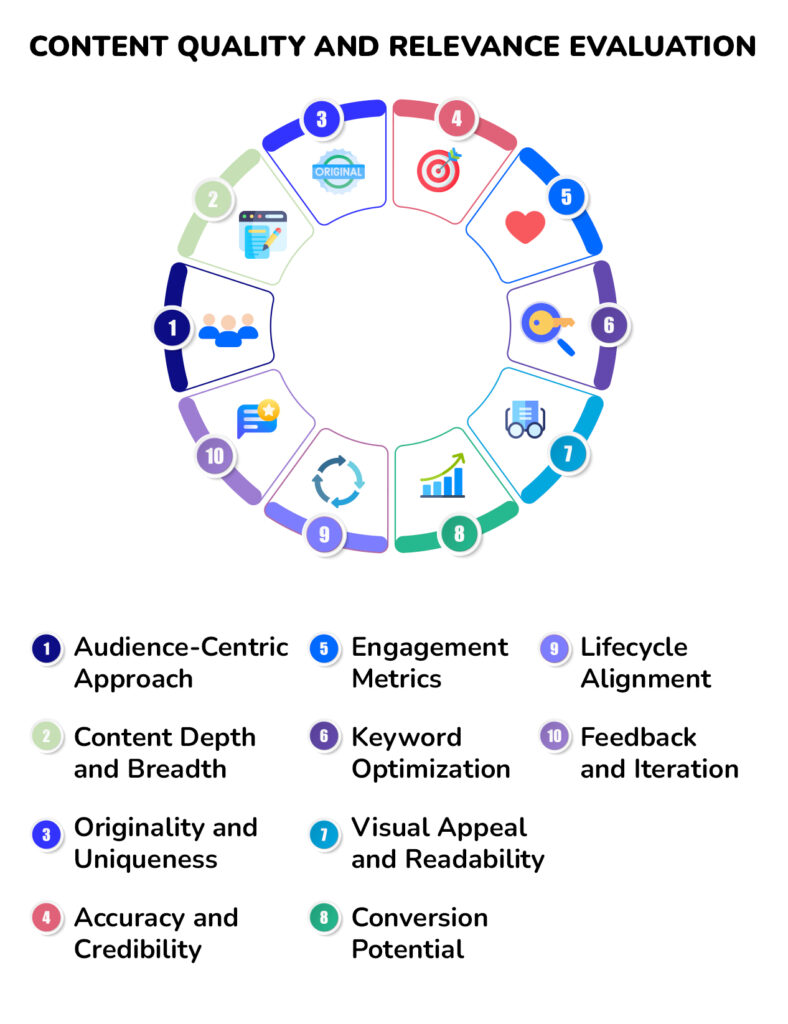
This group of factors describes your website’s ability to provide original, engaging, informative, reliable content on a regular basis.
Originality
Google values content that is authentic. If you post duplicated, plagiarized or AI-generated content, your website can be penalized. For example, if your ‘original’ articles have more than 30% of AI content, they can render your SEO optimization for them useless.
You can use tools like Grammarly or ZeroGPT to check your content for authenticity.
Content Depth and Completeness
Detailed, thorough longreads that cover a specific topic in its entirety tend to rank better. Google has means to assess how good and in-depth your coverage of the topic you’re trying to rank for is.
Freshness
There’s evidence that Google gives preference to content that is published on a regular basis. This is particularly true for news, events, or trending topics. Anything that indicates relevance and timeliness to users.
Readability and Clarity
Google favors content that provides an easy and comfortable read. This means no walls of text, structure elements, such as lists, bullet points, nice formatting, short clear paragraphs.
Content Format Diversity
Relevant content props can also score you some more points. Integrating various formats like images, videos, lists, infographics, or tables is good for both user engagement and signalling content quality to Google.
Semantic Search
Semantic Search ranking factors allow Google to understand and evaluate how well the intent and context behind queries match your content. It actually goes beyond exact keywords to deliver meaningful and accurate results.
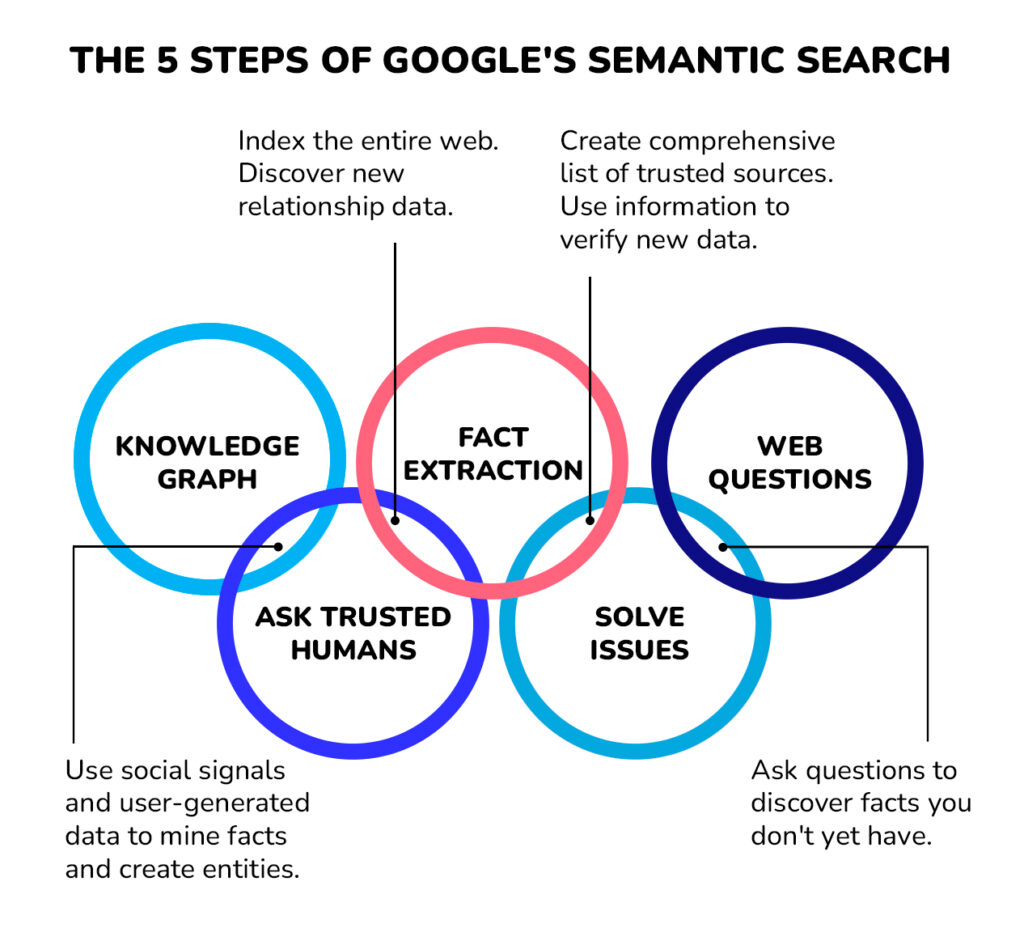
Keyword Intent Matching
Google matches content with users’ search intent—informational, transactional, navigational, or commercial—to deliver precisely relevant results. That is why it’s crucial to consider search intent when you optimize a particular piece of content. It would be wrong to optimize a large how-to article for commercial search, for example.
Structured Data & Rich Snippets
Google uses schema markup to understand page content contextually. Rich snippets are meant to give short, concise answers to a specific user query. Optimizing for these can significantly increase visibility as you’ll be placed on the SERP top even if your page itself isn’t there.
Synonyms and Related Terms
Google has a very decent level of recognition for synonyms and related semantic terms within content. This allows you to greatly broaden your keyword coverage and avoid overusing direct match keywords, which can get you penalized.
Contextual Relevance
Google doesn’t evaluate your content relevance based on the quantity of matching keywords alone. It looks at the entire context. For instance, an article about joint health and exercises from an established yoga blog with a history of well-ranking publications will rank much better than the same article in a general news outlet.
Voice Search Optimization
Optimizing content for conversational queries helps capture voice search traffic, as Google increasingly prioritizes natural-language queries.
User Experience (UX)
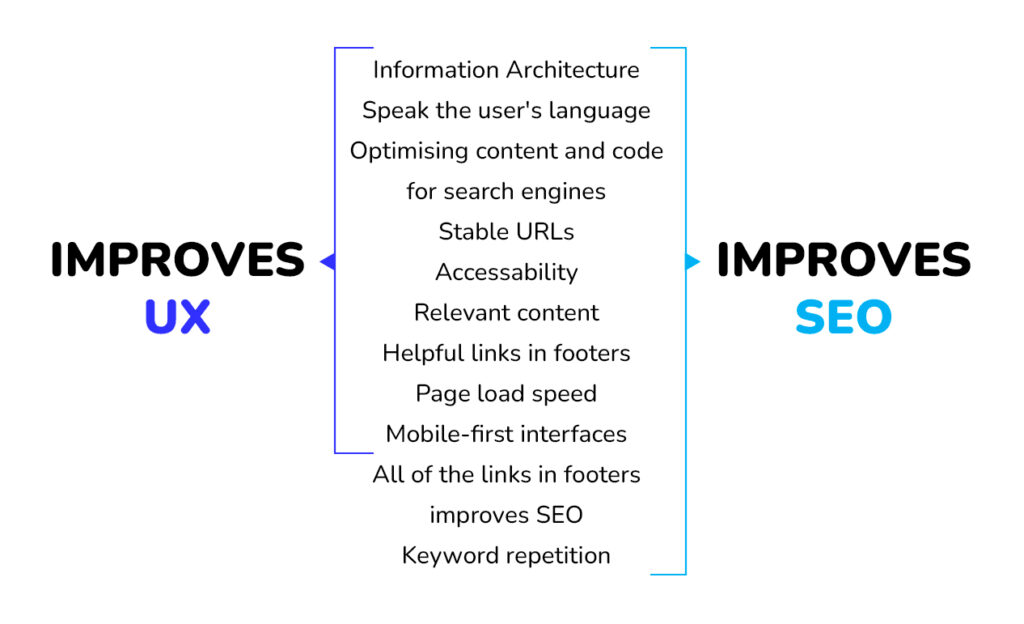
User Experience factors evaluate how pleasant the interaction with your content is from the user point of view. As we have already mentioned at the start of our article, UX factors have seen a dramatic rise in impact over the last few years.
Page Load Speed (Core Web Vitals)
Google assesses loading speed, interactivity, and visual stability (Core Web Vitals). Faster-loading sites rank higher and offer better user experience.
Mobile Friendliness
Google’s been using mobile-first indexing for some time now. It rewards responsive, mobile-optimized websites that provide seamless user experiences across all devices.
Dwell Time and Bounce Rate
Google evaluates user engagement through dwell time (time spent on page) and bounce rate (percentage of immediate exits). The former should be higher and the latter should be lower. For Google, both metrics act like user satisfaction signals.
Safe Browsing and Security (HTTPS)
Secure websites (HTTPS) rank better, because Google treats the use of https as efforts towards data safety, privacy, and site trustworthiness.
Ad Density and Intrusive Interstitials
Excessive ads or intrusive pop-ups negatively impact user experience and ranking positions. Google penalizes sites with poor ad practices.
Technical SEO
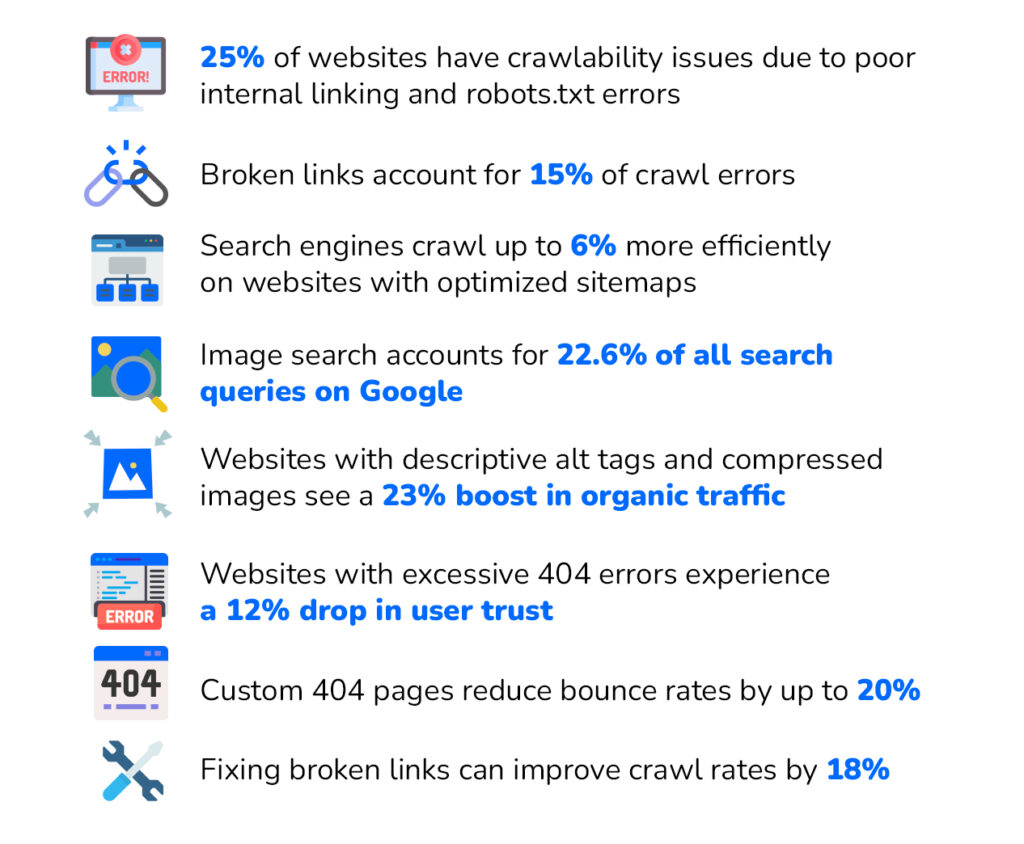
Technical SEO factors refer to how efficiently your website can be crawled, how convenient it is for Google to rank and index your pages, and how accessible your materials are for both users who navigate your site and Google crawlers.
Website Crawlability and Indexability
Google prioritizes sites that can be efficiently crawled and indexed. This means that all of your specifically important pages must be accessible without crawl errors.
XML Sitemap and Robots.txt
XML sitemaps and properly configured robots.txt guide Google bots to essential content. This can help you optimize crawl efficiency and indexing accuracy.
Canonicalization
Canonical tags prevent duplicate content because they guide Google to your preferred content versions, which in turn positively impacts your authority and relevance.
Structured URL Architecture
Clearly structured, descriptive URLs help both Google and users understand page context. It also improves indexing and ranking accuracy.
Proper Image Optimization
Using proper alt tags for images not only improves your accessibility level, but also reduces bounce rates and leads to increase in organic traffic .
E-E-A-T (Experience, Expertise, Authoritativeness, Trustworthiness)
E-E-A-T is a set of principles Google uses to evaluate your content from the point of view of how useful and trustworthy or how harmful and unreliable your content is to the users. Keep in mind that for some topics, described by the YMYL (your money or your life) principle, this evaluation is specifically strict.
For example, an article on personal budgeting or investments will be given a serious E-E-A-T evaluation because it deals with personal finances.
Author Expertise
This might be harder to adhere to for newer sites, but working towards establishing yourself as an expert in your niche is essential. Content authored by recognized experts demonstrates credibility. Google evaluates author qualifications, reputation, and expertise level. Adding social proof, verified diplomas and other tokens of professionalism is also a must if you have any.
Authoritativeness
Google considers your website’s industry recognition, authority, and reputation. It is still unclear how your website’s industry authority is established by Google, but backlinks, citations and referrals from acclaimed experts play a role here.
Transparency of Sources
Clearly cited, transparent references enhance trustworthiness, signaling to Google that content is credible, accurate, and reliable. It is worth your while to add valuable sources, add citations to your statistics, and quote well-known experts in your niche.
User Trust Signals
Positive user interactions like reviews, engagement rates, and comments demonstrate trust and enhance content’s perceived credibility in Google’s view. You should encourage your users to share their positive experiences with your website, company and services. One of the ways to do so can be offering a loyalty program or discounts in exchange for reviews.
Secure and Transparent Website Information
Clear policies (e.g., privacy, terms of service, contact information) and HTTPS security demonstrate transparency, boosting trust from users and Google. Make sure you spell out clear rules and terms of use if anything like this applies.
Local SEO & Google My Business
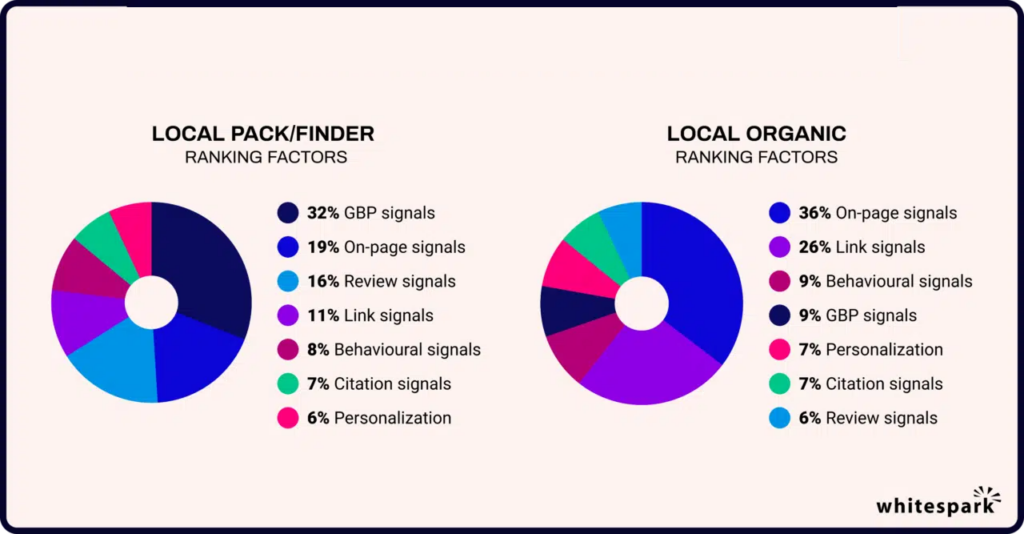
Local ranking factors determine how visible your website is in searches geographically limited to your area. These factors also drive how much traffic you receive from Google maps.
The better optimized your Google My Business page is, the more positive reviews you have on it, the more relevant information it contains, the better chance Google will show your place to users when they zoom in or out of Google Maps.
Google My Business Profile Optimization
Complete, accurate, and actively updated GMB profiles significantly enhance local search rankings and visibility in Google’s local pack and maps.
Make sure you add menus, list of services, pictures, up-to-date-contacts and other details that may be important for your visitors. For example, Google allows you to specify if your business is women-owned, vegan, pet-friendly, etc.
Consistency in NAP (Name, Address, Phone)
NAP consistency across multiple directories and platforms strengthens local ranking signals. Always keep a close eye on which contacts you list and where, and make sure to update them in a timely manner.
Local Citations and Reviews
Positive reviews and consistent citations enhance local authority. Google Maps reviews and a review score is one of the most important credibility signals to Google. It is worth your while to think of ways to encourage your users to leave a review on Google maps if they like your services.
If your business is relevant for ranking on other large review aggregators such as Recommend Me, TripAdvisor, etc., make sure that you maintain a review profile there as well.
Localized Content
Localization isn’t just about translating your page to a language. It’s about considering the local events, culture code and timeline. Tailoring your content for local consumption is a great way to boost your local SEO.
Backlink Profile
No matter which developments we see in Google ranking algorithms, one thing seems to remain constant. A diverse, well-balanced backlink profile still plays a decisive role in how your website ranks in SERP. This hasn’t changed.
What has changed though, is that Google now evaluates all the factors together, so, focusing on a few but neglecting others will get you nowhere.
According to statistics, link building is considered the most challenging SEO task by the majority of experts. And this is where tools like Serpzilla come to your help.
Serpzilla takes on the tedious and time-consuming aspects of link building, such as referring domain research and evaluation, outreach and automatization of placement, gathering campaign data and presenting it in an easy-to-use dashboard.
This leaves you to perform the tasks that need a human touch, such as evaluating your content and context and monitoring your campaign.
And here are some backlink-related ranking factors to be on the lookout for.
Backlink Quality
Links from authoritative, trustworthy, and relevant sites improve your SEO performance and credibility much more efficiently as compared to numerous low-quality links.
Anchor Text Relevance
Relevant, descriptive anchor text helps Google clearly understand page content and context. Proper anchor type distribution also helps to make your backlink profile look more natural which Google always looks favorably upon.
Link Diversity
Your links should come from a wide variety of domain types, link sources, and attributes (e.g., follow/nofollow). You should have social media mentions as well as news citations and influencer nods. This appears natural, credible, and healthy to Google.
Absence of Toxic Links
Maintaining a backlink profile free from spammy or irrelevant links prevents penalties. One thing to be looking out for here is new rules for links that Google Penguin and Panda algorithm updates bring about.
What is considered a perfectly fine link one day can easily become toxic in the next update. When you are keeping a close tabs on your backlink profile, you’re able to act swiftly and quickly disavow toxic links.



